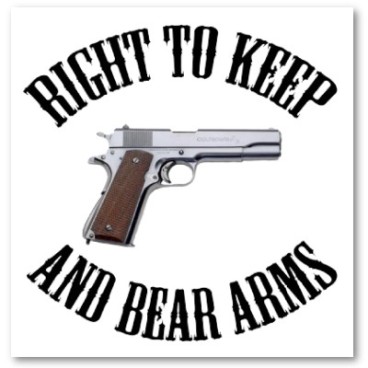garynorth.com /By Gary North / December 22, 2012
I want to go over in considerable detail the fundamental issues of the Second Amendment to the United States Constitution: the right to keep and bear arms.
There is a great deal of emotional commitment in the United States to one of two extreme positions: (1) the right of every non-felon adult citizen of the United States to own any weapon he chooses, and (2) the right of the government of the United States to outlaw the ownership of firearms.
I am hard core. I would extend this right to convicted felons who have served their time or have made restitution to their victims. I would not let the federal government revoke this fundamental right of citizenship.
To understand the Second Amendment, we need to go back to something like the beginning.
FEUDALISM AND POLITICAL SOVEREIGNTY
In English common law in medieval times, meaning as late as the 13th century, the feudal legal system limited ownership of military weapons to members of the knightly class, and those classes over the knights. In other words, the ownership of weapons had to do with legal status.
The common man, meaning a peasant, could not be called into military service. Military service was a matter of inheritance of land and status, and this inheritance mandated military training, which created a military mindset. Thus, the weapons associated with this class, which was also a matter of social status, were not to be shared with the peasantry. This placed the peasantry at an obvious disadvantage in terms of military power. It also extended to political power. They had little political power. They were represented mainly by priests.
One of the marks of the knightly class was the right to wear armor. Armor was heavy. So, a peasant who had a simple walking staff was in a position to knock a knight off his horse. A knight in shining armor who was lying on the ground could not get up by himself. He was defenseless. So, the fact that a peasant was not allowed to carry a sword, or a bow and arrow, did not necessarily place him at a complete disadvantage, one-on-one, when dealing with a knight on horseback. It all depended on the tactics of surprise. The knight who was not expecting to be knocked off his horse might be at a disadvantage.
Peasants early on learned how to use walking sticks as weapons. Peasants could not be deprived of their walking sticks. So, they retained a degree of power which was not legally associated with their class. The movie scene of Robin Hood, an outlaw from the knightly class, battling Little John on a log over a stream was unlikely. Little John would easily have killed him. Knights were not trained in the use of staffs.
Anyone who possessed expensive weapons began with a competitive advantage in the use of power. The knightly class was careful to guard its legal rights. Magna Carta was a document created by the barons to defend their rights against the king. These rights were jealously guarded both against intrusions of power from below, as well as any intrusions from above. It was part of a hierarchical social and legal social order.
There is no question that, under most circumstances, the knightly class could deal with the peasants in the field of military battle. There were peasant rebellions from time to time. But, over the centuries, the knightly class did prevail against attempts by the peasants to overturn the legal status of the knightly class.
One of the advantages of this system was that civilians, meaning peasants and the people who lived in towns, were to be left alone by the warriors. They were not to be slaughtered in a military confrontation. Warriors were to do battle with other warriors. Warriors were not to use the specialized implements of warfare against civilians. This was a good arrangement for civilians.






















